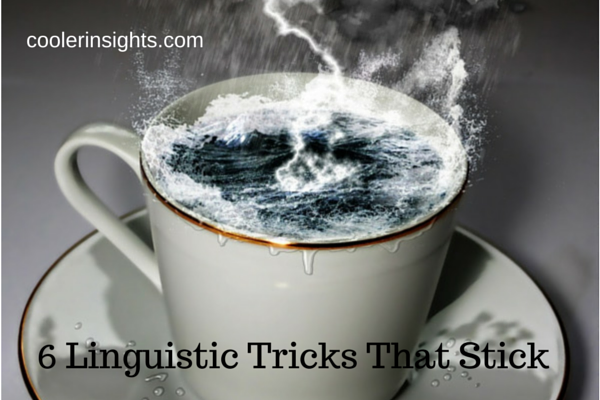Can you guess what the above image is saying? (courtesy of Kritter5X)
Wonder why certain content dazzles and sparkles while others taste flatter than a day old beer?
The secret lies in how words are orchestrated to create a perfect symphony.
Human beings are curious creatures. Our brains process information in a peculiar manner.
A piece of information, presented in varied ways, can generate completely different responses. Blended with powerful visuals, the right mix of text can move men and mountains.
What can writers do to draw audiences and admirers alike?
Find the Time to Rhyme
Tears for Fears. A stitch in time saves nine. The Oracle of Omaha.
These names and sayings stick to our brains because they rhyme.
Which is more accurate? “Woes unites foes” or “woes unites enemies”?
See what I mean.
Its Fun to Pun
Newspapers have used this trick for the longest time. Headlines which catch the greatest attention are those which offer a pun or two. Here are some examples taken from various newspapers:
- [New York Post] President Obama calls on Rep. Anthony Weiner (of New York City) to resign. The headline? “Obama beats Weiner“
- [New York Post] A man goes into a strip club and chops off the head of the owner. The headline? “Headless Body in Topless Bar“.
- When Blackberry retrenched its staff as part of global downsizing? “6,000 RIM Jobs on the Line” (source: Hypervocal )
Of course, puns can also go the other way like this terrible one from Chicago Sun Times:
- Courtesy of Charles Apple
We Love to Count! Ha Ha Ha Ha Ha….
Numbers have always worked in content, especially in today’s bottom-line driven world. There is something click-baity about content marketing and copy headlines which we find alluring. We love to quantify and numbers give us that assurance.
Consider how many blog posts you have read with titles like this?
– 7 Ways to Save Our Planet This Christmas
– 10 Things to Try Before You Die (this included a bonus rhyme too!)
– How I made $157,023 a month while working 5 hours a week (note that odd figures make it look more believable)
Un Un Un Un Un Believable…
I know I know. We all love to hate the latest wave of linkbaiting, clickbaitey headlines hitting our Facebook newsfeeds, thanks to viral content marketing purveyors like BuzzFeed, ViralNova, and their ilk.
But the thing is that we still fall victim and click on those links, especially when they are paired with an amazing, incredible, and stunning image.
Here are two examples of such headlines that will change your life (I swear) from Upworthy:
The Magic of Metaphors
As I’ve blogged before, metaphors and analogies are powerful ways to tap the human mind. By using examples that we are familiar with, we strike a deep and resonant chord with kindred spirits.
Some of my favourite examples come from movies and books. A great one is Forrest Gump’s “Life is like a box of chocolates, you never know what you’re gonna get”. Another comes from Haruki Murakami’s wonderful Kafka on the Shore, which goes like this…
“When I open them, most of the books have the smell of an earlier time leaking out between the pages – a special odor of the knowledge and emotions that for ages have been calmly resting between the covers. Breathing it in, I glance through a few pages before returning each book to its shelf.”
Similes Make Me Smile
In a similar fashion, similes are expressions that help us understand how one item relates to another. These figures of speech are often easy to imagine and visualise.
Some age-old examples include the following:
– As sweet as a rose
– Making mountains out of molehills
– Good coffee is like friendship: rich and warm and strong
– “A good speech should be like a woman’s skirt: long enough to cover the subject and short enough to create interest” – Winston Churchill
What other linguistic tricks would you have up your sleeve? Care to share?




